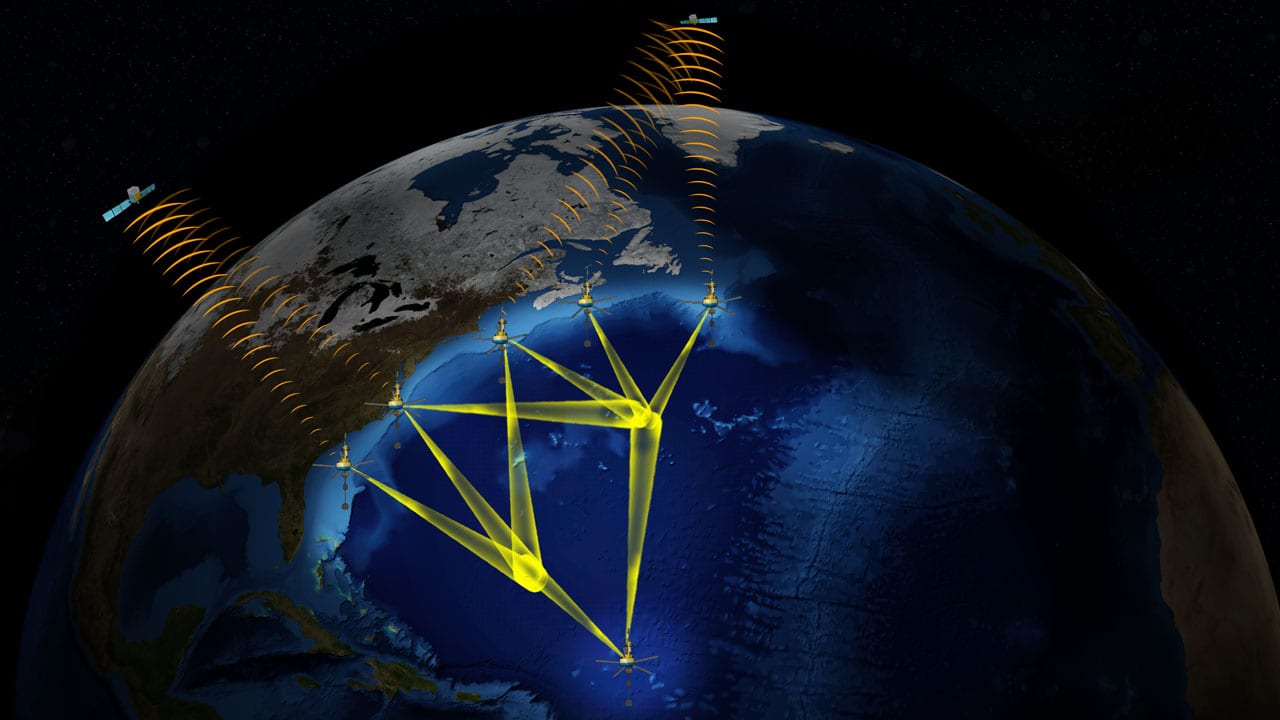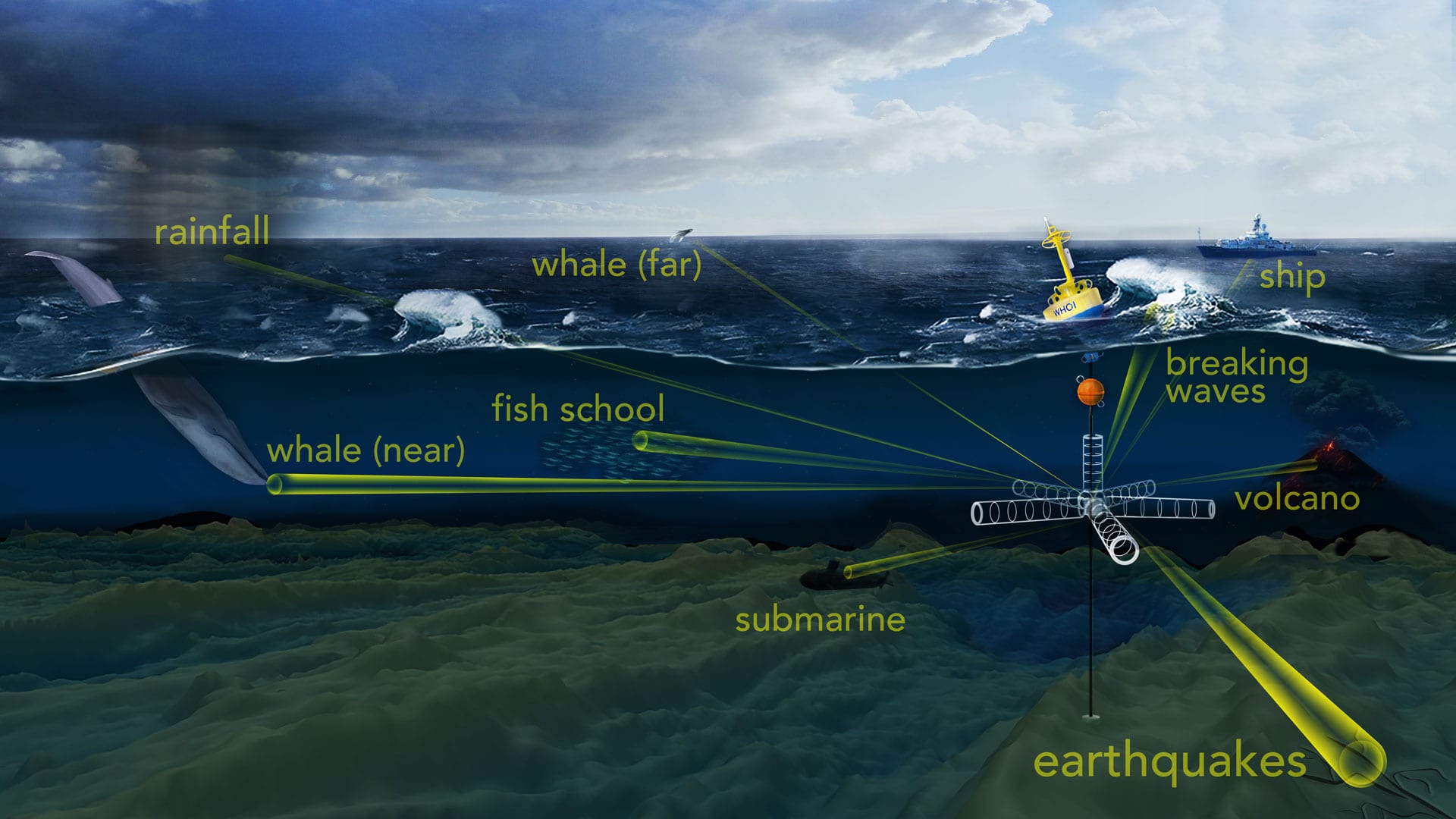Transformative technology to revolutionize the way we listen to the deep ocean
Ying-Tsong (YT) Lin, Applied Ocean Physics & Engineering Department, Edited by Véronique LaCapra | August 27, 2020
Most of the ocean is visually inaccessible to humans. Seawater absorbs and scatters visible light, making anything below the sunlit surface appear dark and murky. The ocean is also impenetrable to many communication and geolocation technologies, such as radio waves, GPS, and other forms of electromagnetic radiation.
For scientists wishing to probe the ocean’s opaque interior, sound is one of the most efficient tools available. Sound travels effectively through seawater—a feature known to marine mammals, which have evolved to use sound to communicate, find food, and navigate underwater. Oceanographers have also taken advantage of sound’s ability to propagate through seawater, using underwater acoustic technologies to greatly advance our understanding of the ocean and marine ecosystems.
But using sound to “see” into a noisy ocean has its challenges, and it can be difficult to distinguish individual acoustic signatures amidst the cacophony of the underwater soundscape. To overcome this challenge, WHOI scientist Ying-Tsong (YT) Lin and a team of engineers are building the first-ever 3D underwater “acoustic telescope.” Analogous to an optical telescope focusing on distant objects in space, this 30-foot diameter, six-armed, star-shaped array of hydrophones will be capable of tuning in to acoustic sources tens to hundreds or even thousands of miles away, isolating them
from other background sounds. The instrument will also be equipped with a satellite communication system for real-time data transmission from the telescope back to scientists on a ship or in a lab on shore.
Using this novel technology, scientists will be able to listen in on distant acoustic phenomena—such as whale calls, schooling fish, crashing waves, rainfall, and earthquakes—all of which produce distinctive acoustic signatures. The acoustic telescope will be sensitive to a broad range of frequencies, enabling scientists to map the complexity of sounds in the ocean and provide a more nuanced, holistic view of both the natural and human-generated underwater soundscape. Once constructed, it initially will be deployed at the edge of the continental shelf off the Northeast Coast of the U.S. to demonstrate its ability to obtain an unobstructed “view” of the North Atlantic. The ultimate goal is to build an array of acoustic telescopes capable of recording the 3D soundscape of an entire ocean basin.

The ultimate goal is to build an array of acoustic telescopes capable of recording the 3D soundscape of an entire ocean basin
Ying-Tsong (YT) Lin is a scientist and engineer in WHOI’s Applied Ocean Physics & Engineering Department. Lin specializes in the physics of sound propagation, numerical modeling, and “big data” science, and develops acoustic technologies for the U.S. Navy and to advance scientific understanding of underwater physical phenomena and marine life.

